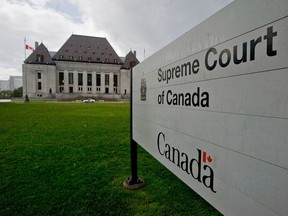Opinion: By its own terms, the STCA can only operate if both Canada and the US qualify as “safe” countries for asylum seekers. By that measure, the US is often unsafe for asylum seekers.

.
The Supreme Court of Canada is about to hear an appeal of unconstitutionality against the Safe Third Country Agreement between Canada and the US. The STCA requires that asylum seekers seek refugee protection in the first country of arrival, either Canada or the United States. It only applies at official ports of entry along the land border. Since its implementation in 2004, the STCA has prevented thousands of asylum seekers from seeking legal protection in Canada.
Announcement 2
.
Few Canadians realize that the STCA was put in place for the specific purpose of preventing asylum seekers from accessing refugee protection in Canada. The STCA does this by taking advantage of Canada’s geographic remoteness from most of the world’s conflict zones. Asylum seekers trying to reach Canada by land have to pass through the United States, while asylum seekers trying to reach the United States do not need to pass through Canada en route. Requiring asylum seekers to apply for protection in the first country of arrival means that under the STCA, Canada will receive fewer asylum seekers and the United States will receive more.
.
The U.S. resisted this lopsided deal for many years, agreeing only in return for unrelated concessions from Canada in managing the border after 9/11, 2001. The STCA is not, and never was, about sharing refugee responsibility between Canada and the US according to any metric of fairness, capacity, or fairness. Nor is it about “buying asylum”, a term used to denigrate refugees who (for a variety of understandable reasons) do not claim refugee protection in the first state they arrive in. It is simply Canada exploiting its geography to evade the legal obligations it voluntarily assumed when it signed the UN Refugee Convention.
Announcement 3
.
Under its own terms, the STCA can only operate if both Canada and the United States qualify as “safe” countries for asylum seekers, that is, countries that provide asylum seekers with the basic protections required by international law. By that measure, the United States is often unsafe for asylum seekers, and this did not begin or end with the presidency of Donald Trump. The US asylum regime fails to guarantee due process in asylum determinations, detains asylum seekers in appalling confinement conditions where they cannot access legal support or assistance, denies refugee protection to women fleeing gender-based persecution and makes ineligible refugees eligible. Meet arbitrary deadlines to submit the application. The Canadian government cannot escape responsibility for the predictable results of diverting asylum seekers into this system, even though it carefully avoids monitoring the security of the US asylum system. Appeals to the political dimension of “ Foreign Relations” also cannot exempt Canada from its own Charter or its international legal obligations.
Announcement 4
.
The STCA has also had the predictable effect of pushing asylum seekers trying to reach Canada towards irregular border crossings. Before the STCA, asylum seekers entered Canada in an orderly manner at an official port of entry. The STCA forced them to seek informal routes into Canada, put their lives and safety at risk, made the border more dangerous and messy between ports of entry, and wrongly labeled them “illegal migrants.”
Some people recommend extending the STCA along the entire Canada-US border. The fantasy of hermetically sealing a 7,000-kilometer border is just that. Indeed, when the Parliamentary Standing Committee on Citizenship and Immigration was warned in 2002 that the STCA would drive asylum seekers into irregular crossings, the Committee recognized that if this were to occur, “the government must be prepared to exercise its authority to suspend or terminate the Agreement. .” The government has refused to exercise that authority.
ad 5
.
The Supreme Court of Canada now has the opportunity to assess the legality of an agreement whose purpose is to allow Canada to evade its legal obligations. More than 85 percent of the world’s refugees reside in the global south. Canada receives a trickle of asylum seekers in absolute and relative terms. Removing the STCA will not drastically change Canada’s relative contribution to asylum protection, nor will it lead to an increase in the number of US asylum seekers entering Canada; that didn’t happen before STCA and it won’t happen now. However, getting rid of the STCA and returning to the normal practice of asylum seekers gaining access to official ports of entry will help restore safe, orderly and humane management of our refugee protection system.
Efrat Arbel is an Associate Professor at the University of British Columbia Allard Law School. Audrey Macklin is Professor, University of Toronto, Center for Criminology and Sociolegal Studies and Law School.
Letters to the editor should be sent to [email protected]. The editor of the editorial pages is Hardip Johal, who can be contacted at [email protected].
CLICK HERE to report a typographical error.
Is there more to this story? We’d love to hear from you about this or any other story you think we should know about. Email [email protected].

